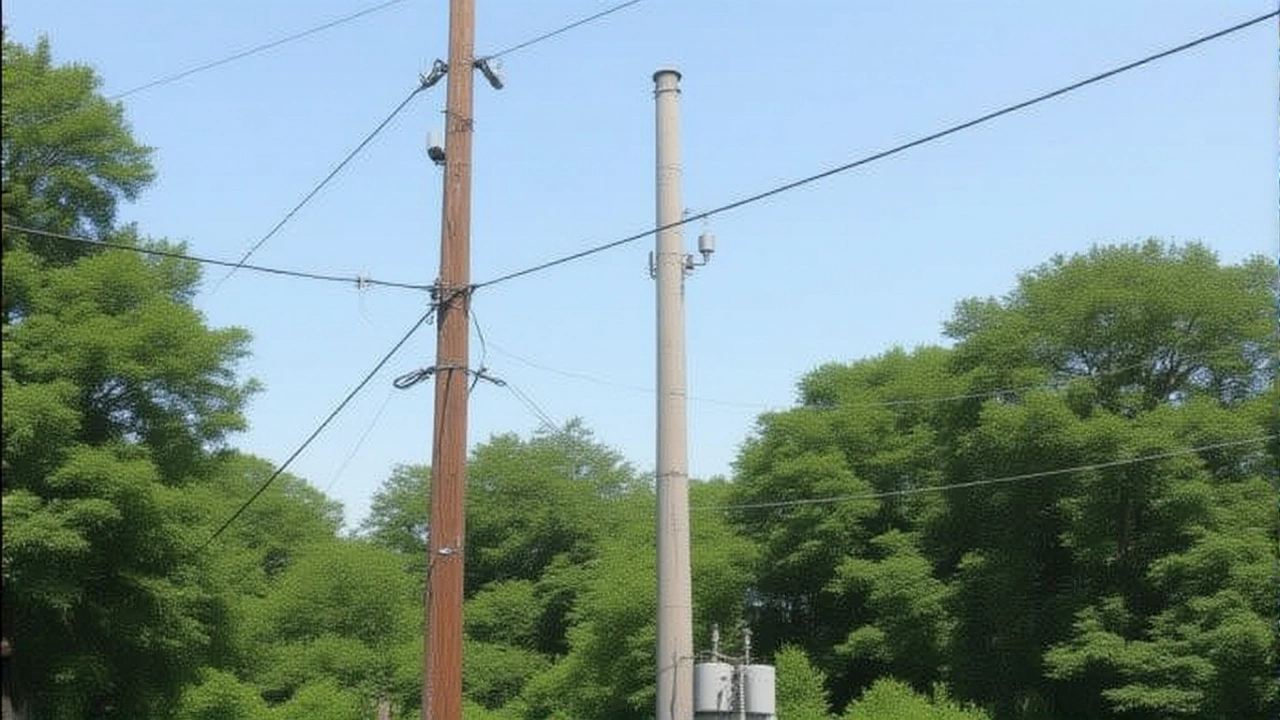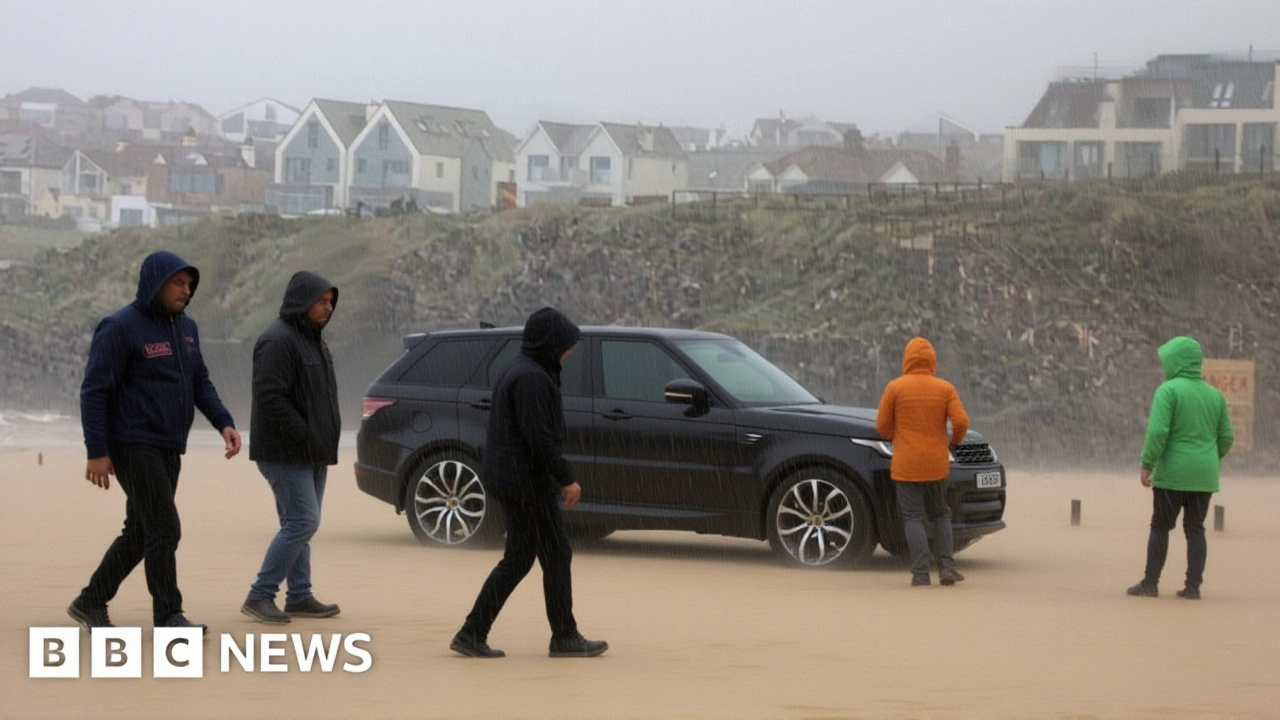When Storm Florisnorthern United Kingdom rolled ashore on Monday morning, few expected the kind of havoc usually reserved for a winter squall.
The Met Office, Britain’s national weather service, slapped an amber warning over most of Scotland and yellow alerts for parts of Northern Ireland and northern England. By late afternoon, rain hammered the hills at 20‑40 mm on average, while isolated spots in the Highlands saw an astonishing 80 mm. Winds roared up to 90 mph on exposed ridges, with gusts of 50‑60 mph sweeping the lowlands.
Storm Floris: A Late‑Season Surprise
August is supposed to be a quiet month for high‑velocity winds. Yet scientists from the Climate Northern Ireland Centre flagged the storm as “highly anomalous” – a summer wind event of this magnitude is statistically rare, occurring perhaps once every two decades.
Trees were still in full leaf, which meant the canopy acted like a giant sail. When the gusts hit, branches snapped and whole trunks toppled, littering roads and blocking drainage. The result? Flash‑flood pockets forming where water could not escape. Residents in remote glens described the sound as “a freight train tearing through the woods.”
Weather Warnings and Predictions
Earlier that day, Met Office forecasters warned that the storm’s trajectory would push it straight into the Scottish Highlands before skirting the east coast of England. Their computer models, calibrated with data from the UK Met Service’s 10‑km grid, projected wind speeds of 80‑90 mph on exposed moorlands. The amber alert, issued at 06:30 BST, was set to expire at 23:00 the same day – a window that proved far too tight for crews battling fallen trees.
Meanwhile, Met Éireann in Dublin, which shares naming duties with the UK Met Office and the Dutch KNMI, echoed the severity, urging residents to stay indoors and secure loose objects. Their flood‑risk maps highlighted the western coastal towns of Oban and Ullapool as hotspots for water‑logged streets.
Impact on Transport and Power
Within hours, major highways like the A9 and M74 were peppered with downed trees. The Scottish Transport Minister, Neil Paterson, told reporters, "We’re seeing multiple lane closures and a handful of accidents, but the priority is keeping emergency routes clear." Trains between Edinburgh and Inverness were delayed by up to three hours, and a lone freight service was stranded near Perth for six hours.
Power companies were hit hard. Scottish Power reported that 12,000 households lost electricity at the peak of the storm, a figure that rose to 21,000 by nightfall as secondary lines snapped. The outage map showed clusters around the Cairngorms where trees, swollen with rain, toppled onto pylons.
Local fire crews, many from rural volunteer stations, struggled to reach blocked lanes. As one firefighter put it, "You can’t get your truck through a forest of broken trunks – it’s like a maze." The combined effect of wind‑driven debris and flooding meant that some villages didn’t see power restored until the following morning.
Responses from Authorities and Communities
Emergency services coordinated via the Scottish Resilience Partnership, a joint task‑force bringing together police, fire, and health officials. A spokesperson from Newcastle University’s School of Geography noted, "Our researchers deployed portable weather stations to capture real‑time data – this storm will be a case study for years to come."
Community groups sprang into action as well. In the village of Dufftown, volunteers set up a makeshift shelter in the community hall, offering warm drinks and battery chargers to those left in the dark. Social media channels flooded with images of residents shoveling water from their doorsteps, a reminder that even short‑term storms can leave lasting impressions.
What the Storm Signals for Climate Trends
Climate experts say Storm Floris is a harbinger of shifting patterns. Dr. Aisling Ó Ceallaigh of the Met Éireann Climate Unit warned, "We’re seeing an uptick in high‑intensity wind events during the summer months, which aligns with the broader warming trend predicted by the IPCC." A recent study published in the Journal of Applied Meteorology linked the increased frequency of summer storms to a northward shift in the jet stream, a phenomenon linked to Arctic sea‑ice loss.
That analysis dovetails with the UK’s own Climate Change Risk Assessment, which flagged summer windstorms as a growing hazard for the electricity grid, especially as more renewable installations rely on wind turbines that can be knocked offline by extreme gusts.
Looking Ahead: The 2025/26 Naming List
Just weeks after Floris faded, Met Éireann unveiled the fresh roster of names for the 2025/26 storm season, a collaborative effort with the Met Office and the Netherlands’ KNMI. The list – Amy, Bram, Chandra, Dave, Eddie, Fionnuala, Gerard, Hannah, Isla, Janna, Kasia, Lilith, Marty, Nico, Oscar, Patrick, Ruby, Stevie, Tadhg, Violet, and Wubbo – reflects a blend of cultural heritage across the three nations.
More than 10,000 suggestions poured in from 4,137 members of the Irish public during a social‑media campaign, underscoring the growing public engagement with weather awareness. Officials hope that the names will help communicate risk more effectively, especially if the trend toward summer storms continues.
Key Facts
- Storm Floris made landfall on 4 August 2025, bringing up to 80 mm of rain in parts of Scotland.
- Wind gusts reached 90 mph on exposed ridges; average gusts were 50‑60 mph.
- Met Office issued amber warnings for Scotland; yellow alerts covered Northern Ireland and northern England.
- Approximately 21,000 homes lost electricity at the storm’s peak.
- 12,000 vehicles were stranded or delayed on major highways.
- New naming list for 2025/26 includes 21 names, sourced from over 10,000 public suggestions.

Frequently Asked Questions
How did Storm Floris affect power supplies in Scotland?
The storm knocked down trees onto overhead lines, leaving about 21,000 households without electricity at its peak. Restoration crews worked through the night, but many rural areas didn’t see power back until the following morning.
Why were August windstorms considered unusual?
Summer months typically have milder wind patterns. Meteorologists point to the jet stream’s northward migration and reduced Arctic sea‑ice as drivers behind the rare, high‑intensity gusts recorded during Floris.
What measures are being taken to improve warning systems?
The Met Office and Met Éireann are integrating more localized sensor data, like the stations deployed by Newcastle University, to issue earlier, more precise alerts. Public outreach campaigns are also being expanded after the strong social response to the naming list.
Which areas experienced the most severe flooding?
The western coastal towns of Oban and Ullapool in Scotland reported the deepest water accumulations, as blocked drainage systems combined with heavy rain to create rapid flash floods.
What’s next for the 2025/26 storm season?
With the new naming list now active, meteorologists expect to see a higher focus on public communication. Early-season forecasts suggest a slightly above‑average number of storms, prompting utility firms to reinforce vulnerable sections of the grid.

 Motorsports and Racing
Motorsports and Racing